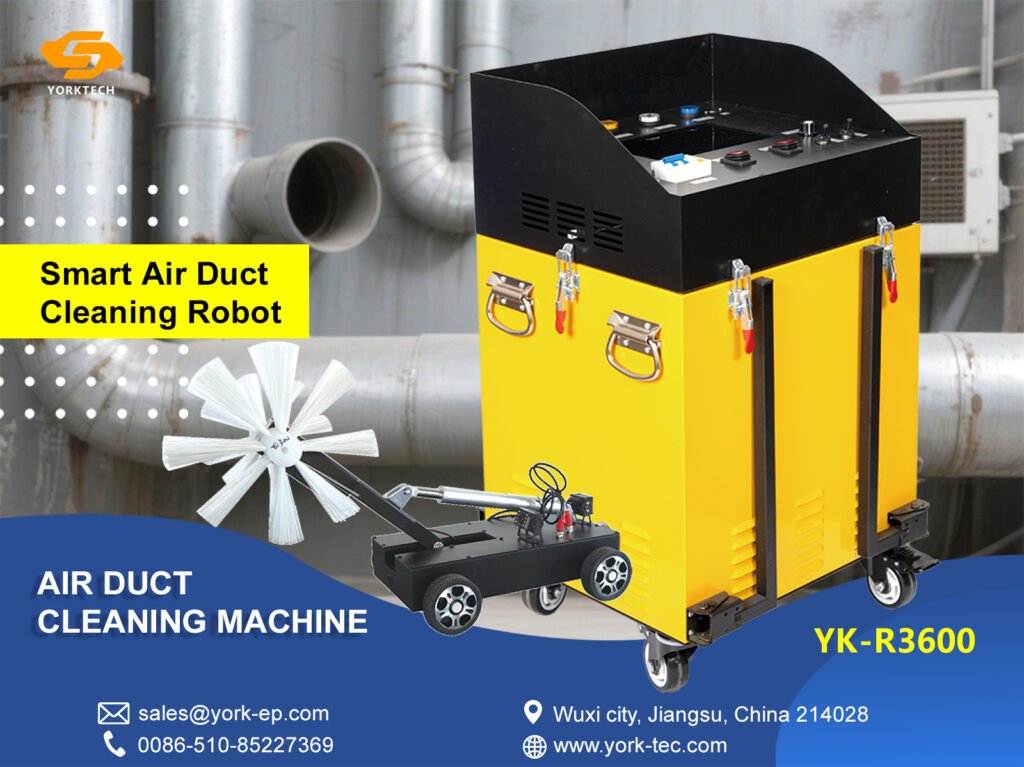In the realm of modern building management, maintaining clean and efficient HVAC (Heating, Ventilation, and Air Conditioning) systems is paramount. Among the critical components requiring regular upkeep are air conditioning ducts, where dust, debris, mold, and contaminants can accumulate over time. These buildups not only compromise indoor air quality but also reduce system efficiency, increase energy consumption, and even pose health risks. Enter air conditioning pipe cleaning robots—innovative devices designed to tackle duct cleaning with precision, efficiency, and safety.
How Do Air Conditioning Pipe Cleaning Robots Work?
Air conditioning pipe cleaning robots are specialized machines engineered to navigate the narrow, winding pathways of air ducts. Equipped with a range of advanced features, they combine mobility, cleaning mechanisms, and monitoring capabilities to deliver thorough results. Typically, these robots consist of a compact, maneuverable chassis fitted with wheels or tracks, allowing them to traverse straight sections, bends, and vertical segments of ducts.
At the core of their functionality is a cleaning system, which may include rotating brushes, high-pressure air jets, or vacuum attachments. The brushes dislodge stubborn dirt and debris, while the air jets or vacuums suck up the loosened particles, ensuring they are removed from the duct rather than merely redistributed. Many models also integrate high-definition cameras or sensors, enabling operators to monitor the cleaning process in real-time and inspect hard-to-reach areas for hidden contaminants or structural issues.
Advantages Over Traditional Cleaning Methods
Compared to manual cleaning or older mechanical methods, air conditioning pipe cleaning robots offer several significant advantages. First and foremost is precision and thoroughness. Their compact size allows them to access tight spaces and intricate ductwork configurations that human cleaners or larger equipment cannot reach, ensuring no area is left untouched. This comprehensive cleaning helps eliminate mold, bacteria, and allergens more effectively, improving indoor air quality and reducing the risk of respiratory issues for building occupants.
Another key benefit is efficiency and cost-effectiveness. Robots can work continuously for extended periods without fatigue, reducing the time required to complete a cleaning job. This not only minimizes disruption to building operations but also lowers labor costs in the long run. Additionally, by removing debris that restricts airflow, the robots help HVAC systems operate more efficiently, reducing energy consumption and extending the lifespan of the equipment—resulting in further cost savings over time.
Safety is also a notable advantage. Traditional duct cleaning often involves workers entering confined spaces, which can pose risks such as exposure to harmful substances, poor ventilation, or physical injury. With robots, operators can control the cleaning process remotely from a safe location, eliminating these hazards and ensuring compliance with workplace safety regulations.
Applications Across Various Sectors
Air conditioning pipe cleaning robots are versatile tools with applications in a wide range of settings. In commercial buildings such as offices, hotels, and shopping malls, where ductwork is extensive and heavily used, regular robot cleaning helps maintain a healthy environment for employees, guests, and customers. In residential properties, these robots can clean ducts in homes, ensuring families breathe cleaner air and their HVAC systems run efficiently.
The healthcare sector also benefits significantly. Hospitals and clinics require stringent air quality standards to prevent the spread of infections, making thorough duct cleaning essential. Robots provide a hygienic solution that minimizes the risk of cross-contamination. Similarly, in industrial facilities, where ducts may accumulate grease, dust, or chemical residues, robots can handle tough cleaning tasks without compromising worker safety.


